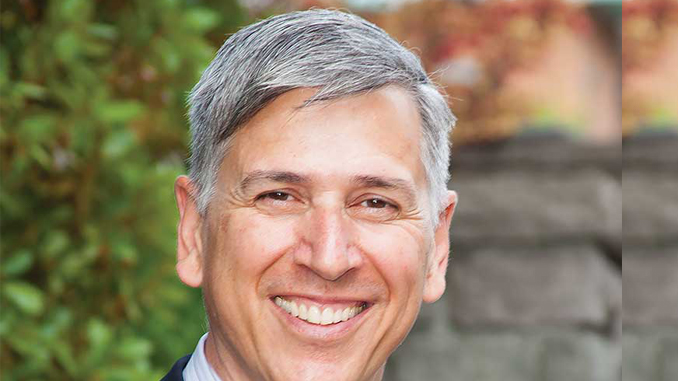Despite some students taking the summer off from school, Washington State University Vancouver Chancellor Mel Netzhammer said his office has been hard at work. He reports that after spending the last few months planning for the coming year and creating a more stable funding base, the campus is ready to begin research on significant capital projects and move forward with its five-year strategic plan.
“We do a lot of fundraising in the summer,” Netzhammer said. “We got our first endowed chair this year.” An endowed chair is created when a donor places funds in an endowment to finance a faculty member off the interest created. “The new $2 million gift will support a chair in hospitality business management,” Netzhammer explained.
The campus also secured funding for other sectors. “In the research area, the grants that we received last year were a significant growth over the previous year,” Netzhammer reported. “We also did an investment of several hundred thousand into supporting faculty research—particularly into equipment that faculty needed to be successful in their research.”
Netzhammer explained that the funding for research is important because furthering research is one of five goals in the 2016-2021 strategic plan for the college. The other four goals are student success, growth, equity and diversity, and community. The university is making strides in those other areas too.
“We hired Obie Ford as our Chief Diversity Officer, which was our primary goal last year with respect to [the diversity] goal in our strategic plan. And we brought in Carolyn Long, a professor in the Public Affairs program, as our Director of Strategic Partnerships. That gives us the opportunity to now work with Carolyn and Obie to take on some of the specific action items that we have related to diversity and community engagement.”
Fundraising is only part of the process. “We have to put our own budget in place,” Netzhammer said. “We are finalizing enrollment. And being a tuition-dependent institution, enrollment has an impact on what we’re going to be doing.”
“We invested early in growth,” he explained. “We have known from the start that increasing the size of our student body is key to the success of the strategic plan—both because it gives us financial security and because a larger institution will gives us greater ability to serve student needs.”
Netzhammer said that preliminary reports for fall semester show a headcount increase of about 60 students and an increase of about 100 full-time equivalent students compared to last year.
With the more stable financial base created by summer fundraising and the increase in enrollment, Netzhammer said the campus is positioned well to begin a master planning process focused on three potential construction projects on campus. “With the addition of a high school on our property, the potential residence halls, and the likelihood of a Life Sciences building, we need to revisit our master plan,” Netzhammer said.
The first project is the expansion of the high school on campus. We have a high school on campus through iTech Prep in the Clark College building, explained Netzhammer. “We’ve worked with them to sign a MOU [memorandum of understanding] that will give them 5 acres of property at the 50th Street entrance to build a campus that will hold 700 middle and high school students.” According to Netzhammer, construction could start within a year, and it will probably open within two years. The second major project involves planning for a potential Life Sciences building. The State Legislature is currently holding up that project. We are waiting for the end of the third special session for the legislature, Netzhammer said. “We have a capital request before the Legislature this year for a new Life Sciences building. They have not passed a capital budget yet, so it’s still on hold.”
The final and most uncertain project involves research on potential campus residence halls. “What students want and what students want to pay for are often very different things,” he explained. “Students want to live on campus for [the price of] what they would pay for an apartment or less, and that’s very hard for a campus to deliver.” The planning this year will help determine what type of housing students want and what the potential cost would be.
That will help determine a funding model. Netzhammer explained that the campus would have two potential funding sources. First, the campus could take on debt in the form of a bond. “If you’ve got a steady stream of students paying for a residence hall experience, then it’s a pretty safe bet to bond it,” he said.
Second, the campus could create a public-private partnership. The Chancellor explained that typically public-private partnerships allow a developer to build and operate the space for a set number of years, after which the developer gives the buildings back to the campus and can take a tax deduction for the gift. The WSU Tri Cities campus is currently using a public-private partnership to fund their construction of residence halls.
The planning this year will also seek to address potential zoning issues. Netzhammer explained, “Part of the reason we’re doing this master planning process is so that the county can see what our plans would look like if we decided to build residence halls and then make a determination that we are zoned to build residence halls. That has to be any precursor to starting a construction process.”
Netzhammer said he can’t provide an estimate on when the campus could have residence halls, because that would presuppose rezoning by the county. What he can confirm is that much of the necessary research and planning will occur this year.

Thanks to my father who informed me on the topic of this blog, this weblog is actually
amazing.
Thank You for reading!